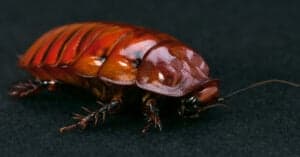Something’s off in your garden. You’ve noticed some damage here and there, a few distortions, and some yellowing leaves. But you haven’t been able to catch the culprit red-handed. Well, if they’re aphids, it’s because they’re seriously tiny. But they like the underside of leaves so you may want to take a look there. Get these literal suckers out of your garden by putting together a mixture of simple ingredients you already have. Discover the most effective homemade aphid spray!
What Are Aphids?
Aphids belong to the family Aphididae and are so tiny that they are almost invisible to the naked eye. They are also known as greenflies or plant lice. Aphids are pests. They may be a range of different colors such as yellow, brown, green, and black. But can these tiny monsters benefit the ecosystem?
Well, kind of. They serve as a food source for ladybugs, parasitic wasps, syrphid flies, and lacewing. But they don’t serve your garden. These little soldiers are impressively persistent (and strong, considering they work in large numbers). If aphids end up in your garden, they can detrimentally affect your harvest. A single season produces many generations so it’s best to get rid of them before they start multiplying.
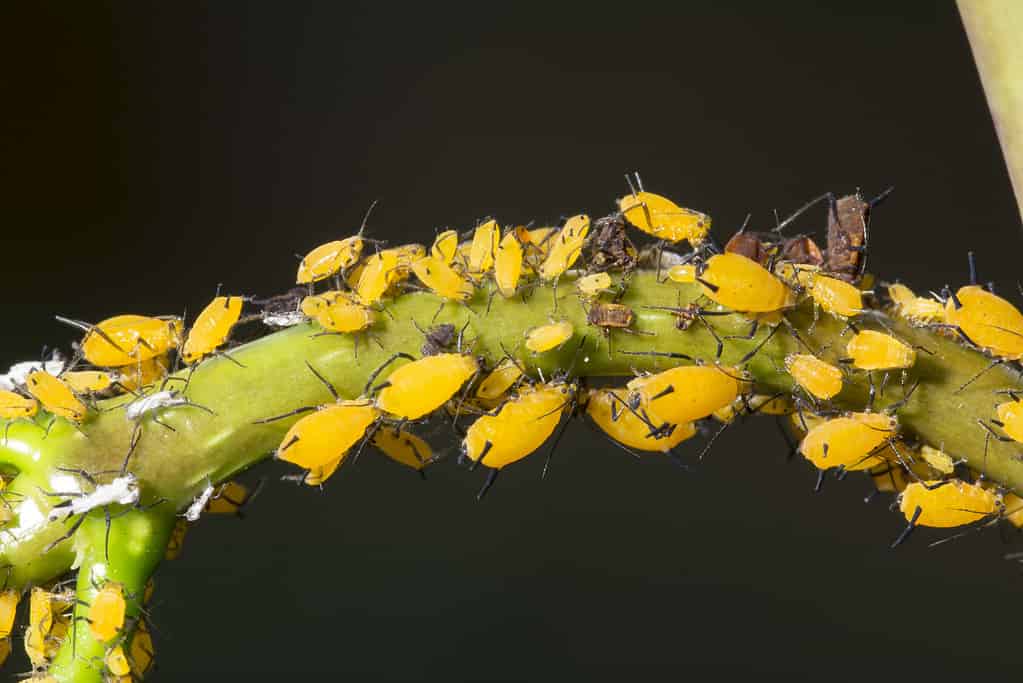
Aphids multiply quickly, producing multiple generations in one season.
©iStock.com/Wirestock
These insects can eat up a good portion of an entire agricultural field when they gather in large groups! Imagine what they can do to your garden! When they plan to eat up the sap from the plants of a large crop, they mean business. Aphids excrete a sugary substance called honeydew that later serves as yummy food for other insects like ants and bees, which is great — but only for ants and bees.
Aphids also help with controlling some plant diseases as they eat up the infected leaves, and in that way, they slow down the plant’s disease. Despite their usefulness on some occasions, they are pests that can cause tons of damage, particularly because of how they behave. With how quickly they multiply, you have to get a handle on them, or they are likely to destroy all the work you’ve put into your garden.
Aphid Identification
Considering how small aphids are, it’s not always easy to identify them. Especially if you have to run back inside and grab your glasses! They’re barely under 0.25 inches and their colors vary. But look at the shape of the insect’s body. If it’s pear-like, you’ve likely got aphids on your hands — er, plants. Sometimes they look kind of waxy, but they may also look a bit woolly.
The good news is that both nymphs and adults appear similar, so you don’t have to try to distinguish between the two. They have long antennae as well and very distinctive tubes that eject from their abdomen. These are cornicles and aphids use them when defending themselves and when emitting pheromones.
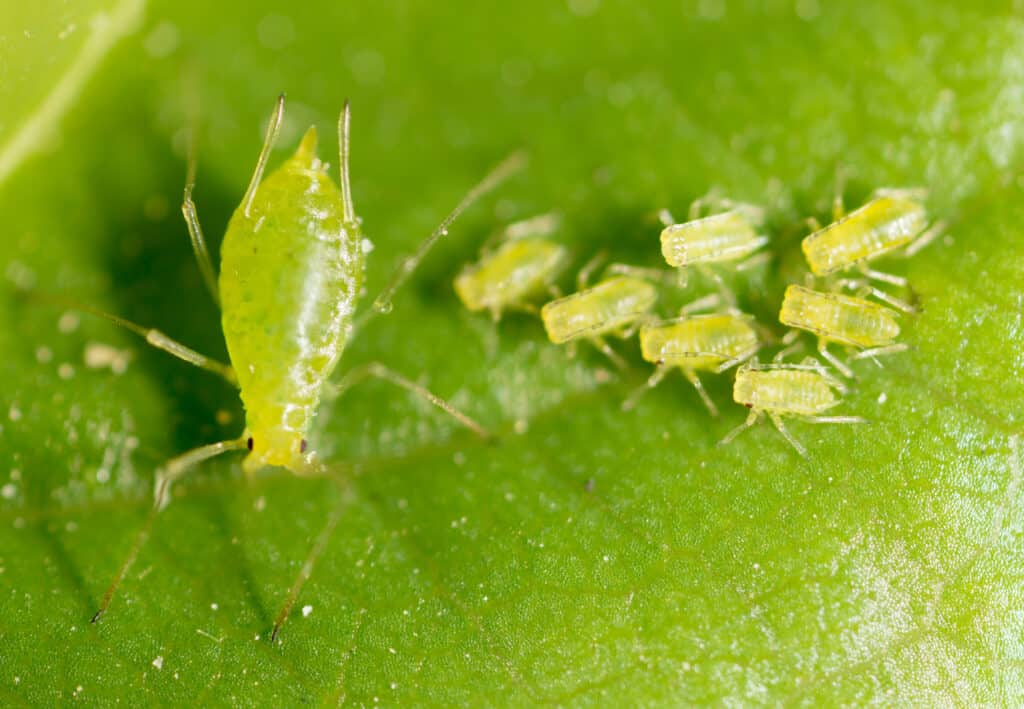
Aphid adults and nymphs look similar to one another.
©schankz/Shutterstock.com
Aphid Behavior
There are different aphid species and though when you spot them, they usually don’t have wings, they can develop them. Interestingly, this is an adaptation that helps them survive. Since they multiply rather quickly, increasing their population, sometimes food sources become scarce. Then, aphids develop wings so they can fly to a new, bountiful area and get a new colony going. The types of plants they gravitate to also depend on their species. There are woolly apple aphids and green peach aphids, for example. Some love cabbage and others that like melon.
Is It Truly Aphid Damage?
Some aphids may stick to their preferred plant while others may spread around, attacking different parts of plants. They can create damage to every part of your plants, from the roots up to the flowers and fruit. They go for leaves and stems, too. If you notice yellow leaves that have a curly appearance, lift them up gently. You’re likely to spot some aphids snacking.
You may also notice that your fruit is deformed or that there’s a sticky substance left behind on your plants. This is the waste that aphids excrete that becomes the food for ants and bees! This “honeydew” may also appear in other places like your outdoor furniture. It’s yet another sign that aphids are afoot.
Although ants and bees get a tasty snack, when the honeydew piles up, it can result in sooty mold. Sooty mold is a fungal growth that you can easily spot because you’ll notice that the stems and leaves of your plants darken in color, appearing almost completely black.
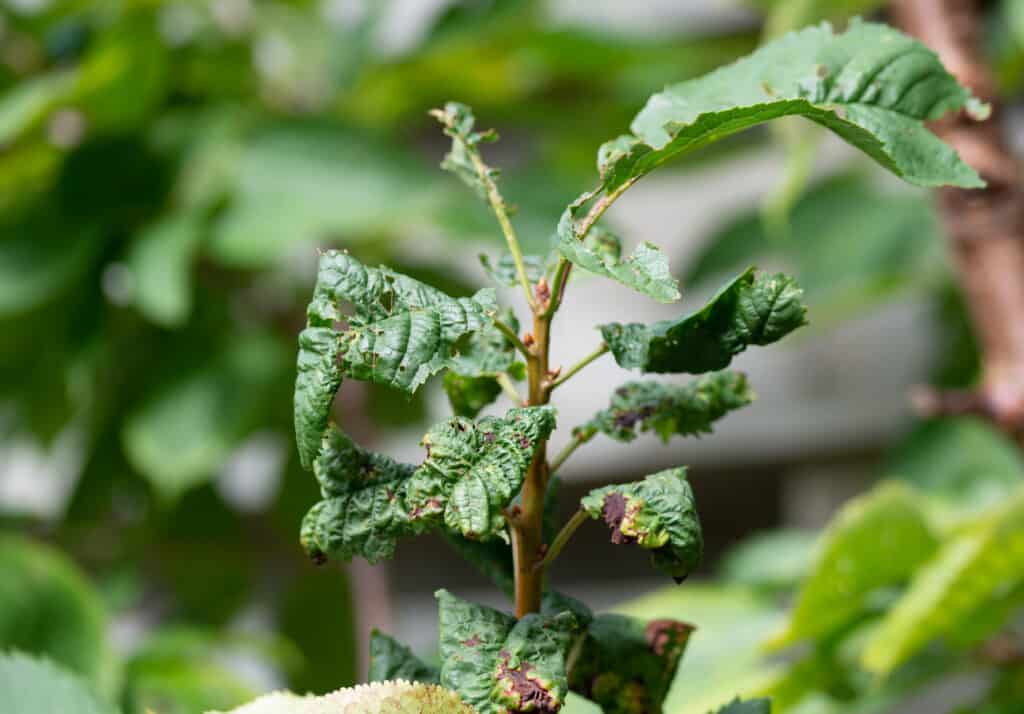
Curled and discolored foliage is a good sign aphids have been in your garden.
©SrideeStudio/Shutterstock.com
Discover the Most Effective Homemade Aphid Spray
To create the most effective homemade aphid spray, you just need a pinch of cayenne pepper mixed with one quart of water and one teaspoon of dish soap in a glass spray bottle. Then, make your merry way out to your garden and spray the mixture on your plants. Don’t just focus on the top of your plants, though. Get in there, lifting the leaves up, to ensure you get those pesky, persistent pests.
If you want to keep it simple, you can just add soap to the water and spray generously for two weeks. Sometimes all you need to do is water them down with enough pressure and they fall, unable to find their way back up. Although aphids multiply quickly, they’re not fast movers. Because of this, you can control their presence with ease.
Planting a repellant such as catnip is highly beneficial too! You can also get creative and increase your harvest by planting cilantro, garlic, and dill. Fennel, leeks, and chives also work well. Surely insecticides work, but they can also cause damage. A homemade formula keeps your garden from having to absorb toxins and takes care of your aphid problem.
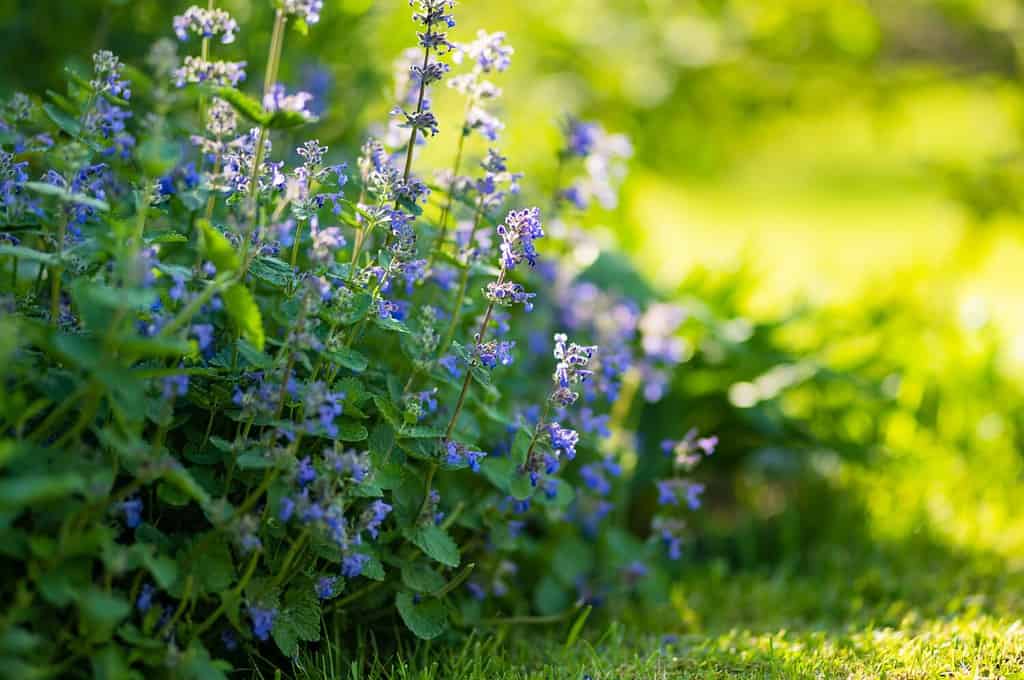
A little bit of catnip in your garden can go a long way.
©MNStudio/Shutterstock.com
Aphid Attractants: Use Them to Your Benefit
When working on getting rid of pests, you can attack from every angle without having to use insecticides. You have your homemade aphid spray, you can plant some natural aphid repellants, and you can also use plants in a creative way to keep aphids from destroying your plants. These plants are known as “trap crops.” They are used to divert the aphids in the wrong direction so as not to damage your good crops.
Aphids have a preference for certain types of plants. As tiny as they are, they have a picky palate! But this works in your favor. When you plant the kinds of plants these tiny creatures enjoy, they gravitate to them and leave your other plants alone. When their favorite food is not available, they leave their picky palates behind and get to snacking on whatever you have in your garden.
For example, if aphids are going after your key plants, create a perimeter of plants that attract aphids. Try sunflowers and nasturtiums! However, be careful with placement. Plant them far enough away so that the aphids don’t have a quick and clear route to your key plants. This gives the aphids the impression that there’s something better to feast on so they can get moving. But really, you’re just luring them away so you can easily target them with your homemade aphid spray!
What If You Leave Aphids Alone?
You certainly have the option of letting aphids run wild, especially if you’re working with more established trees and plants. However, if you have new plantings, you’re curtailing their survivability by letting aphids do their thing, especially if the infestation gets severe. Generally, however, moderate to well-established plants can tolerate a mild aphid infestation. Keep in mind that aphid-borne viruses occur and that they can infect your plants, stunting and killing them.
The photo featured at the top of this post is © Goodly Pixels/Shutterstock.com
Thank you for reading! Have some feedback for us? Contact the AZ Animals editorial team.






